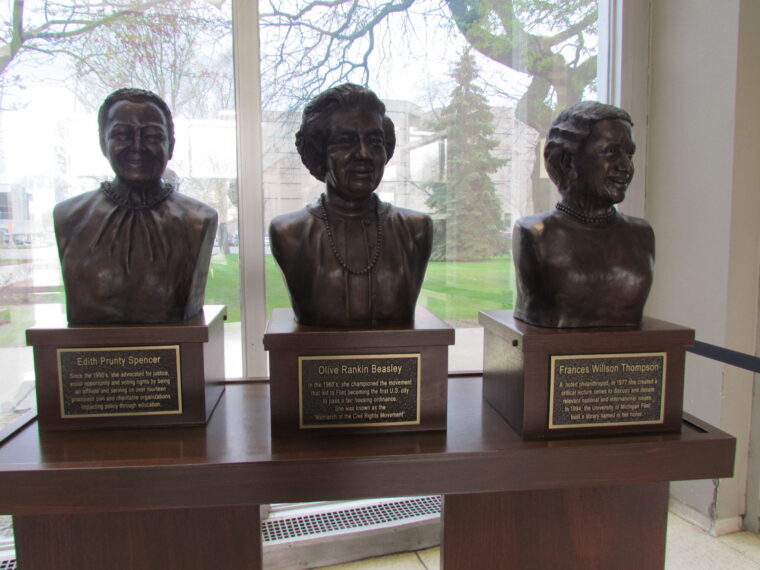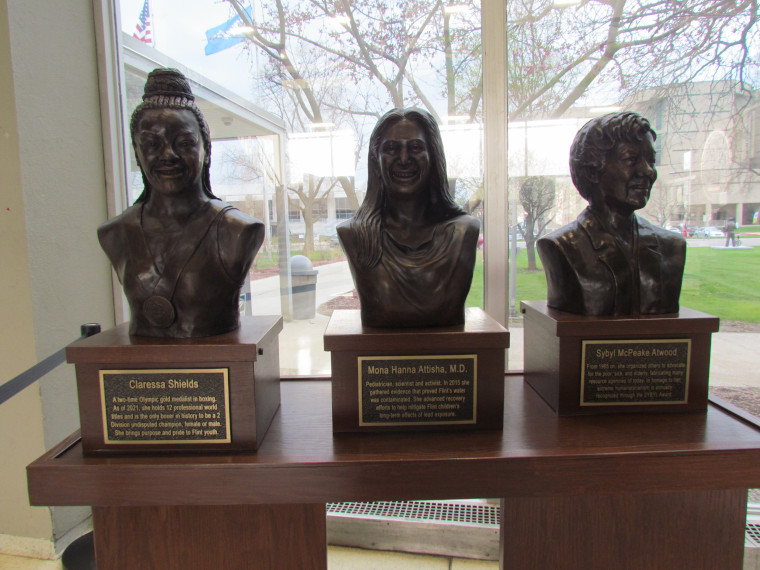Written by Tanya Terry
Stunning was the word used to describe six bust style statues that now have a permanent home at Flint City Hall, which were created as part of a project titled Honoring Heroines and Humanitarians–Women Who Have Contributed to a Better Life for All in this Community.
The first group of honorees are Claressa Shields, Edith Prunty Spencer, Dr. Mona Hanna-Attisha, Sybyl McPeake Atwood, Frances Willson Thompson and Olive Beasley. These women, who all have contributed invaluable service to our community, were asked to stay still while their sculptures were created-or photos or portraits were used in the case of those who had died.
Community organizations, businesses and individual community members help make the recent statue dedication ceremony a reality by doing everything from providing transportation to the foundry to paying for the bronzing, which was called “a very expensive ticket item.”
The project lined up with the Community Foundation of Greater Flint’s mission and its priority to promote equity throughout Flint. So, the Community Foundation was a major supporter of the project from the beginning.
The Flint Institute of Arts provided studio space, time and clay-and several skilled sculpture students of Jane Trotter shared their talent in order to honor women who have shaped Flint’s past, are shaping the city and will continue to shape it.
Pastor Robert McCathern said many people have seen Claressa Shields in the ring or on TV, but he had the opportunity to know Shields’ spiritual life.
“She’s a champion in her spiritual life,” McCathern said of Shields.
According to McCathern, Shields praise dances, speaks to the women at the church on Sunday and works in the community with children.
McCathern also said Shield will be in several movies coming soon.
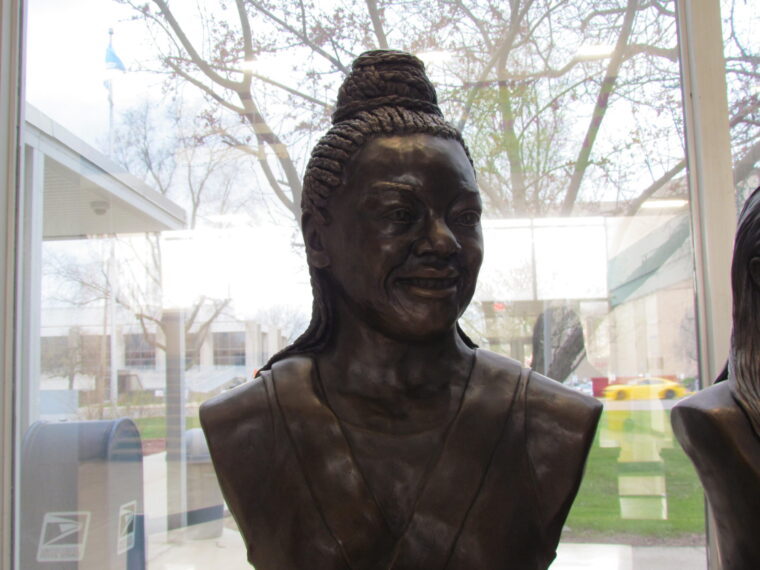
In addition, Shields spoke at the recent statue dedication ceremony saying she carries Flint to every country, city and state she goes to.
“I always bring up the water crisis,” she said, also saying she loved the residents of the city.
Shields’ sculpture was created by Dee Moreno,
Kay Schwartz, director at Flint Public Library, read the plaque for Edith Prunty Spencer’s statue.
“Since the 1950s, she advocated for justice, equal opportunity and voting rights by being an affiliate and serving on over 14 prominent civil and charitable organizations,” Schwartz read.
Spencer’s bust was created by Jane Trotter.
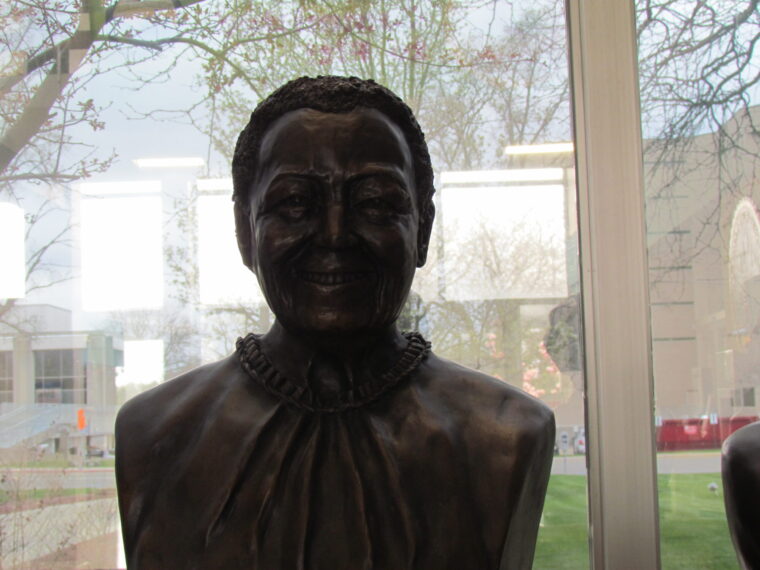
Ingrid Holland, a local neighborhood advocate, said although there were already people on the ground that knew there was lead in the water, Dr. Mona Hanna-Attisha raised the alarm signal even higher because it was affecting children and babies.
“She had to fight four levels of ‘unfit government,”’ Holland said of Hanna-Attisha.
Holland talked about how Hanna-Attisha’s book “What the Eyes Don’t See” details the work Hanna-Attisha did in her attempts to reverse the water contamination.
Hannah-Attisha said all the women being honored had made a difference in the lives of not just their own families, but their communities, which had ripple effects across the nation, if not the world.
Hannah-Attisha’s sculpture was created by Jan Hanson.
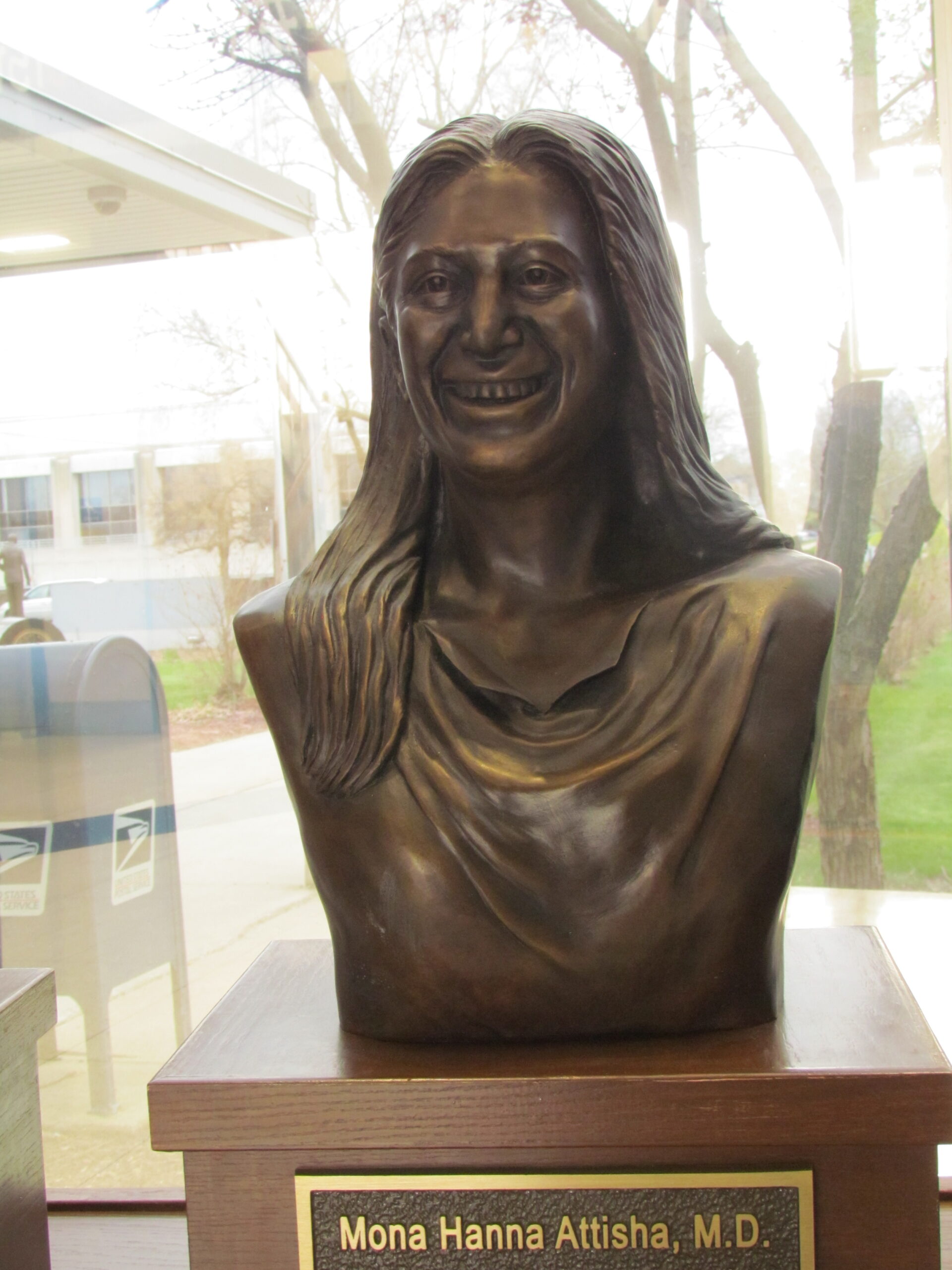
The bust of Sybyl McPeake Atwood was created first, in 2018, and did not have a home for four years.
Dale Weighill, associate vice president for institutional advancement at Mott Community College, pointed out although the plaque starts in 1965 when Atwood first came to Flint; she did similar work previous to coming to Flint in the American South and in Chicago.
The plaque read: From 1965 on she organized others to advocate for the poor, sick and elderly, fabricating many resource agencies of today. In homage to her, extreme humanitarianism is annually recognized through the SYBYL Award.
Jan Trotter created the sculpture of Atwood.
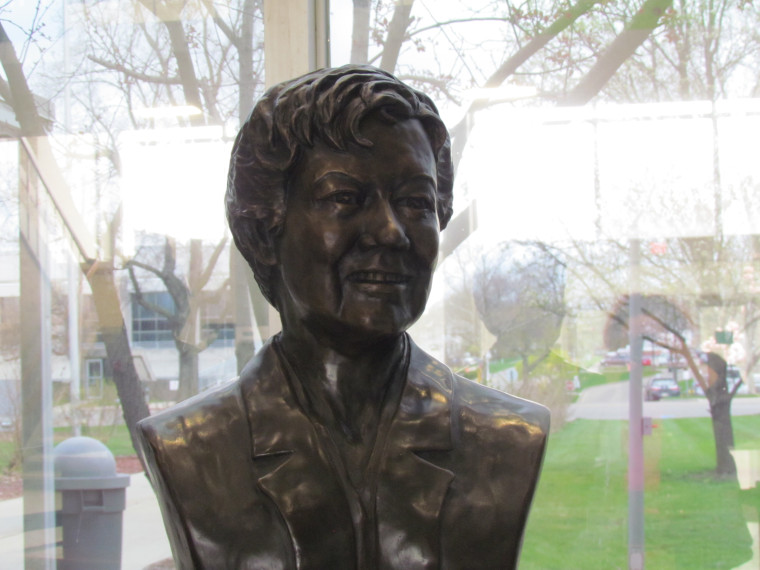
Trotter also created the sculpture of Frances Willson Thompson.
Sue Peters, vice president of the Community Foundation of Greater Flint, spoke extremely highly of Thompson during the ceremony.
Thompson’s plaque read: A noted philanthropist, in 1977, she created a critical lecture series to discuss and debate relevant national and international issues. In 1994, the University of Michigan Flint built a library named in her honor.
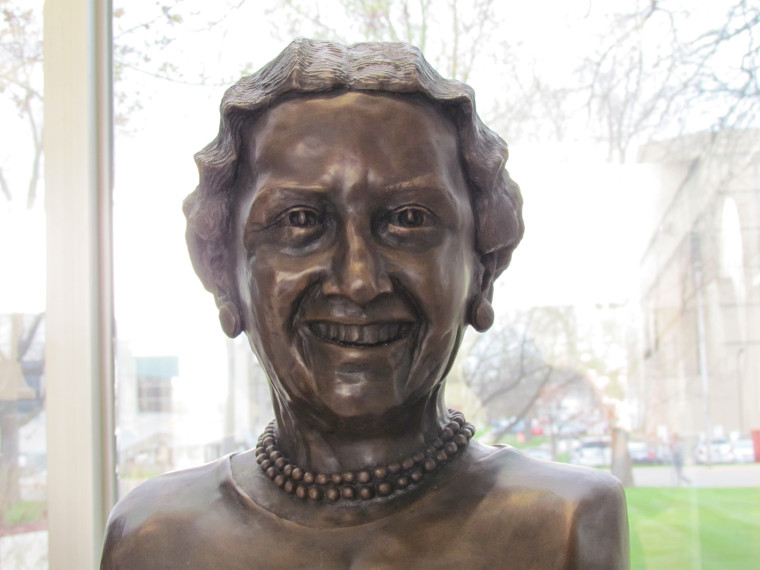
A friend of Olive Rankin Beasley, Ernelle Taylor, read Beasley’s plaque.
“In the 1960’s, she championed the movement that led to Flint becoming the first U.S. city to pass a fair housing ordinance. She was known as the ‘Matriarch of the Civil Rights Movement.”
The sculpture of Beasley was created by Carole Goyt.
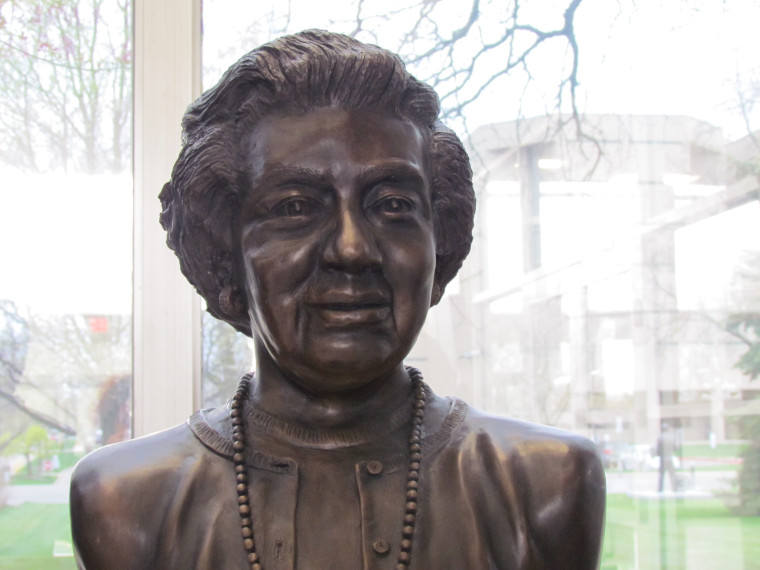
“Legacy is not about what you leave people, but what you leave inside of people,” said Mayor Sheldon Neeley in his closing remarks.
“If we don’t pass the torch, we will be forever starting over,” Neeley continued.
Neeley indicated passing the torch to the next generation of female leaders was the reason the statues now have a permanent home at Flint City Hall.
